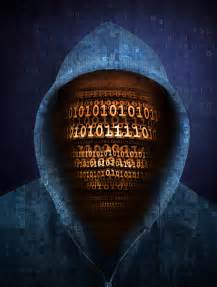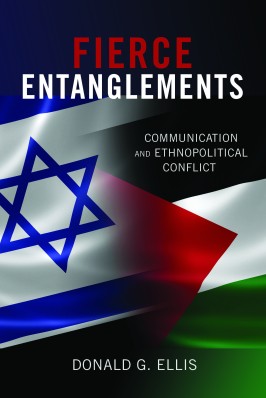Monthly Archives: November 2017
Democracy under Siege: Modern Stresses on the Power of Political Talk
Democracies are rooted in communication and citizen talk is the most fundamental form of that communication. But I have noticed in the last couple of years that talk has become more difficult, more contentious and impatient. I spend a lot of time talking politics but I have noticed increased levels of anger and recalcitrance. I suppose this is all an easy reflection of our national discourse and polarization.
But citizen communication should be treated as a national inheritance. It is still important and too precious to let wither; democratic talk has been called by various communication scholars the “soul of democracy.” Citizen talk is associated with sharpening political opinions, motivating engagement, contributing to social integration, and improving decision making. As Mutz and others have demonstrated, the opportunity for exposure to cross-cutting perspectives is crucial to quality deliberation.
But there is growing evidence that democratic practices such as citizen talk are breaking up with an increase in animosity and retreats to highly circumscribed ideational enclaves. Again, this fractured talk is correlated with similar processes in society; that is, economic inequality has produced more divergent lifestyles and limited exposure to opinions outside a narrow range of preferences. Talk and general social interaction is supposed to transcend and overcome these differences but it is proving too difficult. Talk seems to be losing the battle to establish more integrated cohesion to the muscular forces of anger, tribalism, and general contentiousness.
In an article by Wells et al., in the Journal of Communication (vol. 67, 2017, pages 131-157), they pose the direct research question: “Can talk and its benefits tolerate fierce partisanship and contentiousness…” The authors find that talk struggles against the influence of elite rancor, and everyday communication fails because of simmering historical divisions, resentment, economic crisis, and elites pushing their partisan advantage. You might ask “why doesn’t political talk increase during times of engaged political differences?” Wells et al found that some groups did, in fact, increase their political talk and others decreased. But in either case the increased communication made it difficult to continue when disagreements increased.
Moreover, the increased political tension was responsible for politicizing identities which inserted more subjective and emotional attachment into the discussion which makes it more difficult to compromise and generally consider the side of the other. So you have the interesting conclusion that contentious issues both increase and decrease the politicization of one’s interaction environment such that politics is still pretty invasive.
Social media does not contribute much to the solution because it exacerbates political enclaves. In other words, those on social media are typically like-minded and messages are “preaching to the choir.”
Depressive effects on citizen political interaction are a reflection of social problems that must be addressed. Quality political talk is associated with cultural integration, tolerance, and civic participation. These are not pleasant generalities that simply “sound nice.” They are central to a pluralistic society composed of the politics of difference because it is just that form of communication that manages the politics of difference. Through a combination of new media and cultural cleavages American citizens are less exposed to others, and less capable of the sort of communication that serves both a personal and political culture.
Finally, it’s important to understand that the existential life-world of the individual is different than the larger divides that circulate in the media. There must be an interaction between the individual life-world and the macro social world such that one does not overwhelm the other. For now, the battles between Fox News and MSNBC are defining and damaging the organic democratic culture that emerges from citizen contact.
The NRA is a Domestic Terror Organization
 I rarely devote this blog space to domestic political matters. But every once in a while I am just compelled to comment on some absurdity or outrage in our political sphere (Trump has widened this Lane). I have convinced myself that this is a matter related to international terrorism so I’m not too far from my normal concerns which are more international in nature.
I rarely devote this blog space to domestic political matters. But every once in a while I am just compelled to comment on some absurdity or outrage in our political sphere (Trump has widened this Lane). I have convinced myself that this is a matter related to international terrorism so I’m not too far from my normal concerns which are more international in nature.
I’m talking about how the National Rifle Association (NRA) should be officially designated as a domestic terror organization, listed by the government as a terrorist organization subject to the same treatment as any terrorist group. This argument is not so unique with me. The Daily News is called for the recognition of the NRA is a terrorist organization. They make the argument that the NRA is responsible for the death of many citizens and, interestingly, is equivalent to a state-sponsored organization because of its powerful lobbying, finances, and influence. Guns don’t kill people, our elected officials do. In other words they are not sufficiently engaged in the identification and capture of threats to society in particular limiting gun use and availability. For another article making the case for terrorism look here.
Actually, the NRA is particularly heinous when it comes to who they are responsible for. They are directly implicated in the murder of mothers try to protect their children, families praying together, innocent minorities, young people out for an evening of music, and first-graders learning to read in what they thought was the safety of the classroom.
The president and the NRA assume all responsibility is that of the individual. They believe that guns don’t kill people, crazy people do. They just refuse to accept the data that clearly support the argument that the simple availability of guns increases the likelihood of their use. Just look at the gun data. The United States has close to 300 million guns in circulation and more mass shootings by far than any other country. According to these data the correlation is clear. The only thing that explains the number of mass shootings is the availability of weapons. America is about 4.4% of the world population and has 42% of the guns. A particularly powerful statistic is that the likelihood of getting robbed in London, New York, or Paris is about the same. But the probability of getting killed or shot during that robbery in the United States is 54% higher. This is simply because of the availability of weapons. If I have easy access to a weapon I am simply more likely to use them.
The NRA should take its rightful place on the list of terrorist organizations. They are more of a threat to US citizens than ISIS. Increasingly, gun advocates argue that if more people were armed and legally carrying weapons in public they would be in a better position to protect themselves. So the NRA’s response to too many guns is – more guns! And these people carrying guns and stockpiling automatic weapons usually have a swagger about them and certainly feel confident in their 2nd amendment rights. But the association of the 2nd amendment with individual constitutionally protected gun rights is one of the most successful misinterpretations in history. But we will save that argument for another time.
New Technology and Attacks on Democracy
Free expression, transparent information, and trustworthy and reliable elections are the hallmark of a decent democracy. And although the open and available nature of the Internet is democratizing, it is also easily manipulated in the service of inaccuracies, fake news, and inaccurately represented information. Russia’s full-on assault on American media and democracy is designed to weaken democratic processes and sow confusion. They have engaged in a sophisticated campaign designed to influence the operation and political processes of not only the United States but the Ukraine, the Netherlands, and Western Europe. Their goal is to shake the confidence of democratic institutions, exaggerate differences and divisions amongst groups, and use new technology to underscore a Russian frame and perspective.
This is a form of asymmetric warfare organized around weaker states using their available resources to combat stronger states. Theoretically anyway, it is the same principle as a less powerful ethnic group (e.g. Palestinians, Tamil, Rohingyas, Basques) using terrorist and guerrilla warfare techniques to combat a dominating ethnic group. The United States must now consider these threats as typical and persistent threats to its political existence. And, it is only a matter of time before other countries adopt these techniques and deploy them against other states.
Russia boldly used proxies to set up phony webpages, Facebook accounts, and Twitter messages designed to influence the public discourse surrounding the election between Trump and Hillary Clinton as well as social issues. The perpetrators of these phony web accounts met with little resistance and had their faith in their own hacking skills reinforced. The Russians would find a division in society and then try to exaggerate it for their own purposes. Such instability is very debilitating and contributes to what is most damaging which is a loss of confidence in the electoral process. Few things are more damaging to a democratic system than a widespread belief by participants that elections are not fair. Of course, the Russian goals were not to facilitate rigorous debate but to challenge confidence and maintain social strife. They had ability to manipulate voting patterns and electoral results.
The cybersphere is a perfect environment to operate an anonymous and clandestine project such as this one. Even if they fail to achieve desired results they can still do damage to the confidence and institutions as well as spread distrust and cynicism.
Some answers
First, the electoral process must be reviewed for security breach possibilities with checks and double checks that contain a complete review of the electoral process including access to machines, software, and computer security. This might include the use of paper ballots along with computers to ensure material backup systems.
Second, there needs to be more transparency with respect to funding elections and the nature and integrity of businesses hired to provide electoral services including machines and software.
Third, the tracking of foreign actors and their involvement in US companies should include more monitoring and oversight. This might include attention to various “media buys” and who is supporting them along with an examination of rules and regulations governing foreign control and ownership with respect to financial limitations and elections.
And finally, the detection of deception must be improved. This includes stories containing inaccurate information that seem to be designed to sow discontent and manipulate information. Twitter and Facebook are working on these issues trying to improve their ability to recognize questionable story structures including techniques for “re-informing” the public. Cyber attacks are a new form of threat in an asymmetric conflict that has revealed vulnerability in our democracy. It will require a concerted effort and some thinking “outside the box.”





